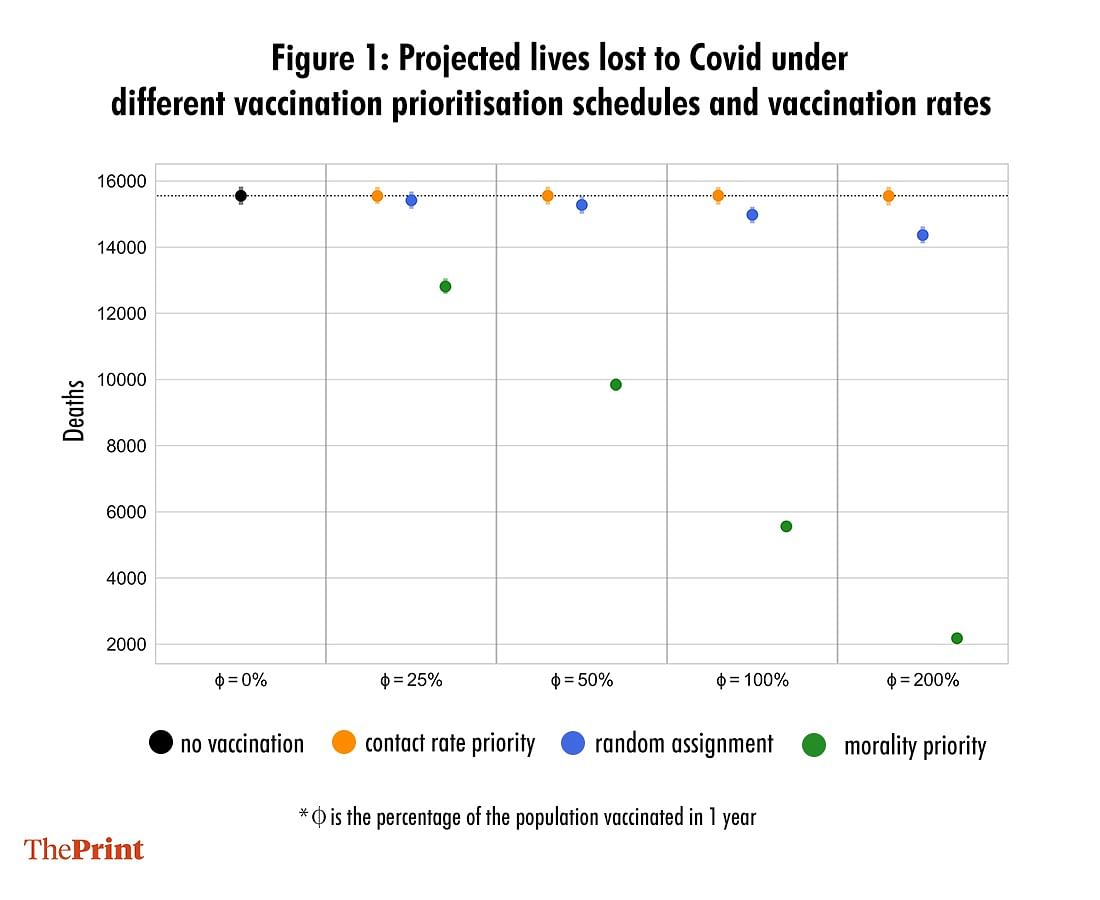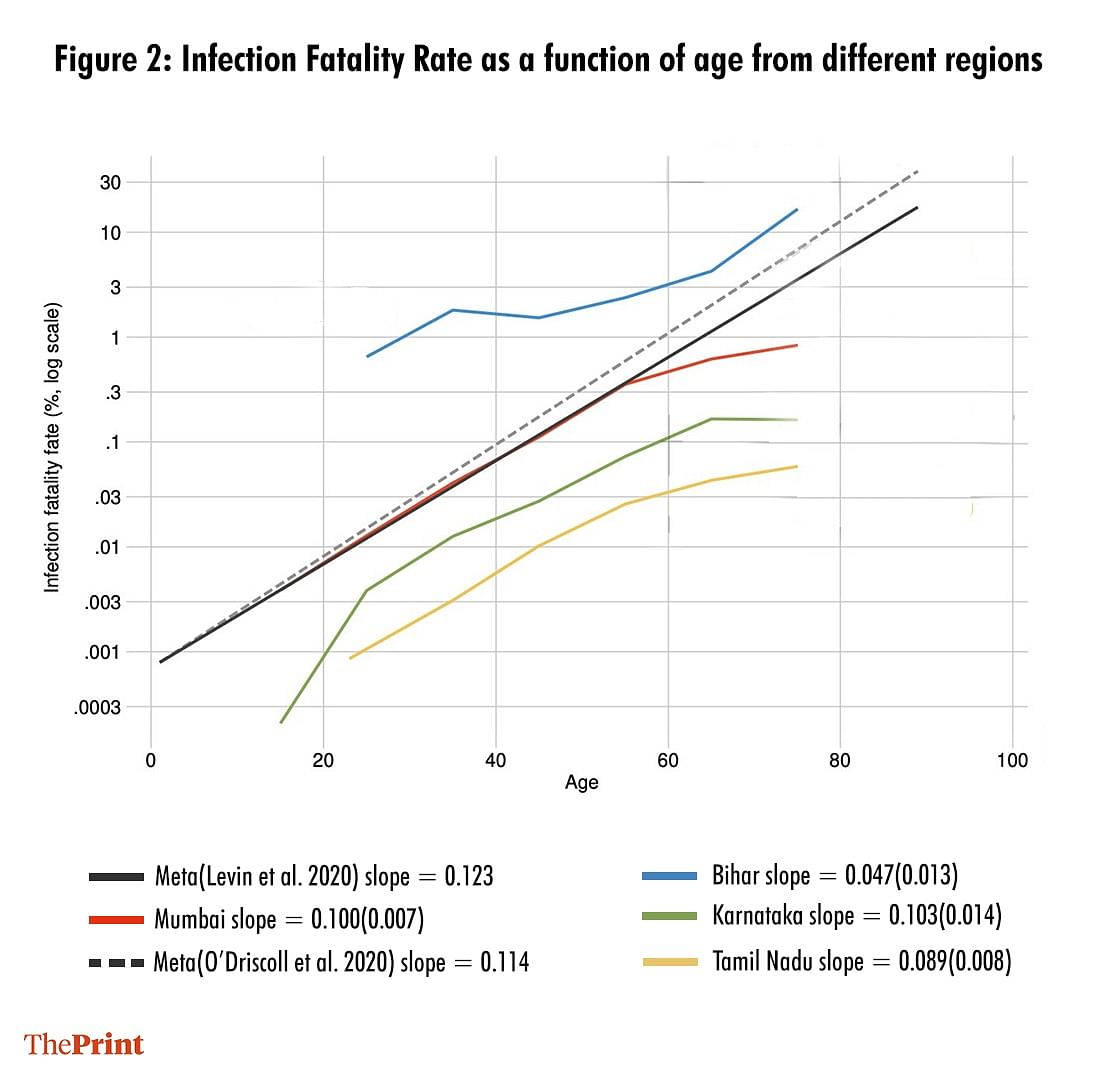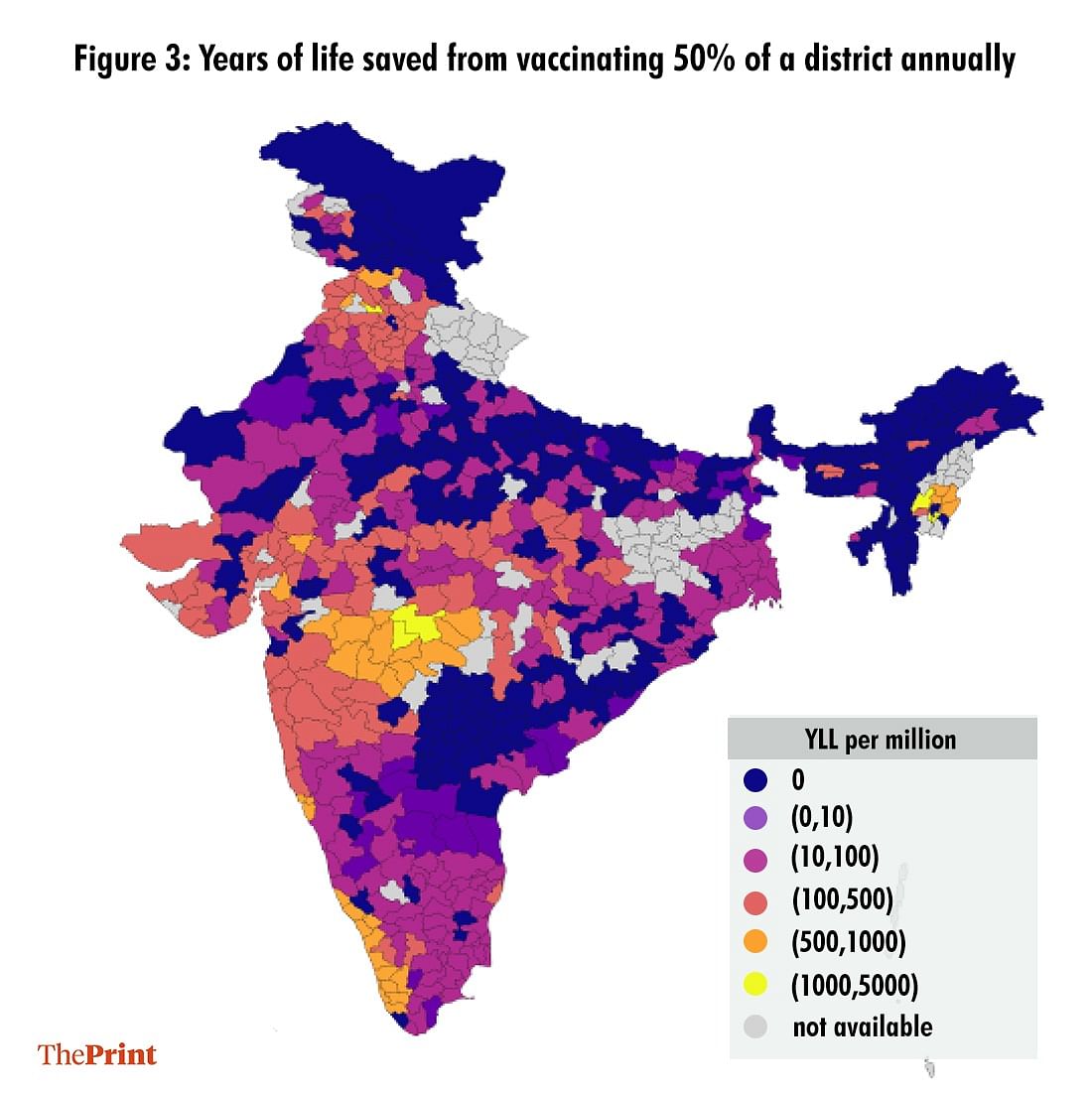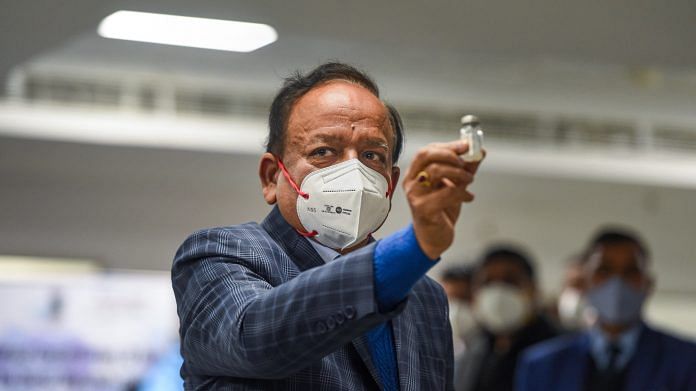Union health secretary Rajesh Bhushan caused some stir recently. When asked whether the Narendra Modi government should open vaccination to all, he replied: “The aim is not to administer the vaccine to those who want it, but to those who need it.” The statement was controversial because many believe that prioritising the elderly will slow vaccination rollout, and speedy vaccination is critical to stopping Covid. But we think the health secretary may have the better of this argument — at least based on recent data and epidemiological models.
There is little debate that vaccines are the best hope India has in its fight against the coronavirus pandemic. India is in the middle of a second wave of infections. However, obstacles to manufacturing and distribution have slowed the country’s vaccination campaign. We cannot vaccinate everyone before they get Covid. So some rationing will occur regardless. If the elderly are vaccinated first, then the young may be vaccinated too late. If access is opened to all, then some of the elderly will not get it.
To make the best of a bad situation, we can all agree that the government should choose the policy that most benefits India as a whole. It should prioritise those who benefit the most or offer the most benefit to others from vaccination. The challenge is to figure out what that policy is.
Vaccination serves multiple purposes but most importantly, it protects the recipient from the consequences of Covid. It helps one’s immune system recognise and evict the virus more quickly. The second benefit is that it slows the spread of disease. The faster the recipient clears the infection, the less likely she is to spread the infection to others, reducing the health costs to others, regardless if they are vaccinated. Third, and least appreciated, is that vaccination helps revive the economy. Once the risk or costs of infection subside, people will work and shop more. We need to consider all these benefits when prioritising ‘who should be vaccinated first’.
Also read: Covid patients’ bodies pile up at Lucknow crematoriums as staff is ‘scared’ or visiting Kumbh
Value from vaccination
To determine who generates the most value from vaccination, we need to consider a few factors. First, people living in some areas have a greater likelihood of catching Covid. We can calculate this risk from serological studies, which tell us what fraction of the population has antibodies to Covid. Second, older individuals have an exponentially higher risk of dying if they catch the infection. Third, working age adults are more likely to spread infection because of their frequent interactions with other people, owing to their job. Finally, some areas have lost more economic ground during the pandemic than others. Vaccinating those areas would bring greater benefits to the economy.
To calculate the value of vaccinating different people and places, we constructed an epidemiological model that accounts for the factors above. The model uses the most recent government data on confirmed cases and deaths, and a serological survey from Tamil Nadu. We also constructed a model to forecast economic activity, employing the best available data on income and spending for over a million people across India.
We evaluated three widely-discussed vaccination strategies: vaccinate the elderly first. This is the policy that the Centre is following. Vaccinate those that interact with others the most, to focus on stemming the spread of Covid. And lastly, allocate vaccination by lottery, on the grounds that this is most “fair” or would be easiest to execute quickly. This last policy is akin to opening vaccinations to all, while regulating the price.
Also read: In UP, MP & Gujarat, BJP ministers & MLAs are blaming bureaucrats for Covid spike mess
Projected lives lost
Prioritising the elderly saves more lives than any other policy. In the graph below, we plot the expected number of additional deaths under different vaccination policies and under different rates of vaccinations. Based on data from the early days of the second wave, we expect 16,000 additional deaths by the end of the epidemic in the absence of vaccination. If we could vaccinate half the country within a year, but prioritise the elderly, the number of deaths could fall to 10,000. If we instead prioritise working age populations or vaccinate at random, the number of deaths remains above 15,000. In fact, even if one could vaccinate the entire population in six months by eliminating any prioritisation, in a campaign akin to opening it for all, we would not save as many lives as a slower but elderly-focused campaign would.

The reason for our findings is that Covid is exponentially more lethal to the old than the young. The proportion of those who die if they are infected is called the Infection Fatality Rate (IFR). The graph below shows estimates of IFR from four studies across India. In a study in Mumbai, we found that IFR for 70 year olds was 0.6 per cent, 300 times more than for 20 year olds (0.002 per cent). Our estimate of IFR in Karnataka and Tamil Nadu is much lower for all ages. But the IFR for 70 year olds is still 100 times that for 20 year olds. Recent discussions around how the fatality rate from Covid may have fallen have not been rigorously verified. In any case, we have no evidence to suggest IFR of young relative to the elderly has changed.

If we value not only the lives saved, but also economic benefits from vaccination, policies that focus on working ages or provide access to all do somewhat better. Both policies are more likely to vaccinate people who work, which will boost the economy. However, those policies still fare worse than the prioritising elderly, because the elderly continue to consume, even if they work less.
Also read: Can AI tell us how severe patient’s Covid infection will be? Study finds promising results
The way forward
None of this suggests that there is no room for improvement in India’s vaccination strategy. The recent surge in cases is hitting some areas — notably cities — more than others. So it may be valuable to focus on districts with faster growth in cases. The graph below shows the life years saved from vaccinating just 50 per cent of each district’s population. Districts where the epidemic is spreading faster generate more health benefits from vaccination. Perhaps the government should prioritise solving logistics problems in those districts.

Moreover, if vaccination is ultimately opened to all ages, the government should initially prioritise areas that are hardest hit in the new wave. Additionally, the government may want to relax restrictions on the price of vaccines so as to hasten their distribution by private hospitals. While we would recommend some supply be reserved for the elderly, we should maximise the value of any supply released to all others.
While there remain many perils from Covid in the road ahead, a careful analysis can provide a map that minimises the dangers from this generational threat.
Anup Malani @anup_malani is the Lee and Brena Freeman Professor at the University of Chicago Law School and a Professor at the Pritzker School of Medicine. Alice Chen @alicejychen is an Associate Professor of Public Policy at the USC Sol Price School of Public Policy. Satej Soman @satejsoman is a researcher at the University of Chicago. Sabareesh Ramachandran @r_sabareesh is a graduate student at University of California, San Diego. Views are personal.
This article is part of The Indian COVID-19 Alliance (TICA) project.
Edited by Anurag Chaubey




Excellent piece. However,. the young writer should understand that vaccine is under control of Head of the state who also has access button Nuclear bomb. The Secretary has to toe the line of people in power in same way like fellow ruling party politician from Assam. Speaking with TV news channel Hemanth Biswas Sarma went on to claim it’s Bharatiya sankkruti to safeguards and respct elders first and it was first priority. Obviously hum tomay vaccine dengay tum humay vote dho. Youngsters of course are happy if they’re allowed to move freely and attend rallies without restriction and masks. For them PM is giving them Speechnation instead of vaccination to keep them happy
The issue is basically that of (A) of supply sources and their location within the country. (B) transporting the vaccine to the vaccination centers under the required carriage conditions of temperature (C) storage facilities at the vaccination centers. (D) availability of the qualified staff to administer the dose.– Fortunately the record keeping has been on line but often the connectivity is problem.
It is like, if we have a problem in Ladakh we cannot move the half the army there overnight.
The delays, and screw ups are all over the world except in China. Since the vaccines have come everyone knows the that vaccination is one of the best answers.
Adequate supply and Logistics for last mile delivery is what is require. We need to trust the administration and constructively point out the deficiencies to improve on both.
Very nice article. The crucial point is when did the second wave begin? Looking at the Worldometer graph for daily infections the lowest point was 11th Feb 2021’ when one day infections hit the bottom of ten thousand odd figure. Thereafter, the numbers started rising. The cumulative death figure as on 11the Feb was 155484. Now as on 14th April it has reached 172115. So the second wave has so far claimed 16631 lives and the wave is still going strong. Today’s one-day infection has reached around 1.85 lakh, whereas the peak for first wave was at around 1 lakh. So, we can surmise from the above that mortality rate of the second wave is low but infection rate is quite high. The breakneck speed of the second wave has caused disruptions in families, communities, caused shortages of beds, medicines, ventilators. The only long term solution, as it appears now, is to complete the vaccination drive at the earliest. For that we need capacities to manufacture vaccines produced domestically , contracts to bind producers overseas to supply vaccines as per time schedule. It requires no brain to realise that considering vast population, the challenges are formidable. We should have anticipated the complex nature of challenges and tied up supplies from within or outside the country. This is a once-in-a-lifetime crisis. Thrift is not a virtue but curse in such a scenario. Cost considerations are of secondary nature when lives are at stake. The Central Government’s miserly and stingy approach is highly condemnable. SII Pune requires Rs.2000 crore to expand their capacity. Why the government didn’t invest and secure rights to the additional production?It required vision and foresight, which is sadly lacking. So wake up Government of India. At least now speed up vaccination. We are a poor laggard in the race with below 10% vaccination rate; while the minimum required for herd immunity is 120% ( two doses per person) . Israel is the only country to have achieved that distinction by paying more than market price. But, as it appears from the Worldometer data, they appear to conquered the Covid, at least for now.